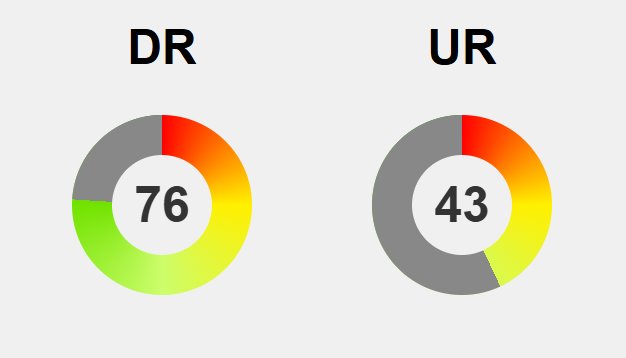Mao Zedong’s revolutionary rise transformed China from a fractured land into a formidable global power, yet his legacy remains shrouded in controversy and tragedy. His bold policies—land reforms, collectivization, the Great Leap Forward, and the Cultural Revolution—sparked unprecedented social upheaval, often with devastating human costs. Behind his strategic secrecy lay a leader driven by conviction but also ruthless in pursuit of his vision, hiding tactics that intensified political purges and social chaos. While his reforms launched China onto a path of modernization, they also left scars of famine, cultural destruction, and repression. Today, Mao’s complex story serves as a stark reminder of the perils of unchecked ideology and absolute power. Can China reconcile the resilience he fostered with the lessons of his darkest mistakes? His legacy challenges leaders and citizens alike to balance revolutionary ambition with pragmatic, humane governance—paving a cautious path toward future growth rooted in humility and social responsibility.
Mao Zedong’s Transformative Legacy: Revolution and Controversy Unveiled
Mao Zedong is one of the most influential and controversial figures in modern Chinese history. His leadership transformed a fractured, impoverished nation into a unified socialist powerhouse, leaving a legacy that still sparks debate today. To many, Mao is seen as a revolutionary hero who dared to reshape China’s destiny through bold, sweeping changes. But beneath these achievements lies a more complex story—one marked by devastating tragedy and hidden secrets that continue to influence China’s course.
Born in 1893 in a humble peasant family in Hunan Province, Mao experienced firsthand the hardships faced by rural communities—poverty, social inequality, and political chaos. These early struggles fueled his desire for radical change and shaped his revolutionary outlook. His exposure to new ideas, both within China and from abroad, broadened his perspective beyond traditional rural life. These influences eventually fueled his determination to forge a new path for China’s future.
Mao’s rise to power was driven by a combination of strategic brilliance and relentless resilience. His ability to adapt Marxist theory to China’s unique social fabric set him apart. Unlike classical Marxism, which emphasized industrial workers, Mao saw the rural peasantry as the key to revolution. His leadership during events like the Long March demonstrated his capacity to endure hardships and inspire loyalty, cementing his authority within the Communist Party. Behind his public persona, Mao was a master strategist, often operating in secrecy and using clandestine tactics to outmaneuver rivals and safeguard his revolutionary vision.
His policies aimed to dismantle centuries-old feudal structures and bring about radical social and economic reforms. Land redistribution and collectivization sought to empower peasants but often involved violent upheaval and chaos. The Great Leap Forward was Mao’s most ambitious push for rapid industrialization, but it resulted in catastrophic famine, with millions dying from starvation. Similarly, the Cultural Revolution tore through China in the 1960s and 70s, causing widespread social upheaval, cultural destruction, and suffering for countless citizens.
Mao’s legacy is a tapestry of remarkable transformation and profound tragedy. His policies laid the groundwork for China’s rise as a global power, but at an enormous human cost. The scars from famine, political purges, and social upheaval are still felt today. His influence extended beyond China, inspiring revolutionary movements worldwide, yet also isolating the country at times due to confrontational policies. Mao’s complex story reveals a leader driven by conviction but also marked by secret maneuvers and ruthless determination.
Understanding Mao Zedong’s legacy means recognizing both his achievements and his dark secrets. His revolutionary zeal fostered unity and resilience, helping China recover from chaos and lay the foundation for future growth. But the tragedies he inflicted serve as a cautionary tale about the dangers of unchecked ideology and absolute power. As China continues to evolve, reflecting on Mao’s story offers vital lessons on balancing ambition with pragmatism and compassion.
Rooted in Hardship: The Early Life and Revolutionary Foundations of Mao Zedong
Mao Zedong’s early life was shaped by humble beginnings in the rural village of Shaoshan in Hunan Province. Born in 1893 into a peasant family, he experienced firsthand the hardships faced by rural communities—poverty, hard labor, and social inequality. These struggles fueled his desire for social change and planted the seeds for his revolutionary ambitions. His education was sporadic, limited mostly to local schools emphasizing traditional Chinese teachings, but even then, Mao was exposed to new ideas circulating both within China and from abroad, broadening his perspective beyond his rural roots.
As a teenager, Mao became increasingly involved in political activism. He joined student groups and read radical literature, which ignited his interest in social reform and revolutionary thought. His personal experiences of hardship and exposure to revolutionary ideas helped him develop a sense of purpose: to transform China into a stronger, more unified nation. During this period, Mao also encountered Marxist theory, which he would later adapt to China’s social realities, emphasizing the importance of peasants as revolutionary agents rather than focusing solely on industrial workers.
China’s political landscape during Mao’s formative years was chaotic. The fall of the Qing Dynasty in 1912 ended imperial rule, but the country plunged into turmoil, plagued by warlord factions fighting for control and foreign powers extending their influence. Mao observed the suffering of peasants and workers, recognizing that radical change was necessary. The May Fourth Movement of 1919 further inspired him, emphasizing modernization and national sovereignty. This wave of intellectual awakening among young Chinese students strengthened Mao’s conviction that China needed a radical overhaul, with the rural masses playing a central role in the revolution.
Mao’s rise to power was cemented through pivotal moments like the Long March, where resilience and strategic skill came to the forefront. Surviving treacherous terrain and relentless pursuit by enemies, Mao demonstrated his capacity to endure and inspire loyalty. These experiences not only elevated his standing within the Communist Party but also helped him craft a revolutionary identity rooted in perseverance and cunning. Behind his public facade was a leader deeply skilled in secrecy—using coded messages and clandestine meetings to navigate internal rivalries and political threats, ensuring his path to leadership remained secure.
His early years of hardship, combined with his ideological development, laid the foundation for his revolutionary journey. Mao believed deeply in the power of peasants and rural communities to overthrow the old order. His exposure to social injustice, coupled with his growing understanding of Marxist ideas, transformed him into a leader who saw radical change as both necessary and achievable through strategic resilience. These formative experiences shaped not only his vision but also the tactical mindset that would guide him through China’s turbulent path toward radical transformation.
Radical Reforms and Policies: Shaping Society Through Struggle and Ideology
Mao Zedong’s radical reforms fundamentally reshaped Chinese society, economy, and politics, driven by a relentless desire to dismantle feudal structures and establish a new socialist order. One of his earliest and most impactful policies was land reform, which aimed to eliminate landlord dominance by redistributing land to peasants. This move broke centuries of landholding traditions, positioning Mao as a champion of social justice. Although empowering rural communities, the process often involved violence and chaos, with landowners persecuted and property seized without legal safeguards.
Building on this foundation, Mao pushed for collectivization, creating large-scale collective farms known as communes. These were intended to increase agricultural productivity through shared resources and labor. Yet, resistance from farmers and local inefficiencies became common obstacles. Despite these setbacks, Mao remained committed to rapid collectivization, convinced it was critical for building a socialist economy. His push for quick progress often overlooked practical realities, setting the stage for future crises.
The launch of the Great Leap Forward in 1958 marked Mao’s most ambitious effort to accelerate industrialization and agricultural output. Mobilizing millions of peasants for massive infrastructure projects and backyard industries, Mao aimed to transform China into a modern industrial powerhouse within a few years. However, the campaign’s unrealistic targets and poor planning led to catastrophic results—most notably, a widespread famine that caused an estimated 15 to 45 million deaths. This episode exposed how Mao’s zeal for rapid progress could spiral into tragedy when practical considerations were ignored.
The Cultural Revolution, beginning in 1966, was Mao’s attempt to reinforce communist ideology and purge perceived enemies. Schools closed, traditional customs and cultural relics were attacked, and millions suffered persecution based solely on political accusations. The upheaval tore through society for a decade, disrupting daily life and leaving deep scars. Mao aimed to solidify his ideological control, but the social chaos and loss of cultural heritage revealed the dark consequences of radical ideological campaigns.
Throughout these reforms, repression was a common tool. Public confessions, show trials, and forced labor became routine means to purge rivals and silence dissent. Many intellectuals and ordinary citizens suffered without fair trials, creating an atmosphere of fear and suspicion. These dark chapters highlight how Mao’s determination to realize his revolutionary vision often came at an immense human cost, even as he pushed forward with sweeping policies.
Behind Mao’s public achievements lay a leader skilled in secrecy and strategic deception. He often concealed his true plans through coded messages and clandestine meetings, maintaining control at all costs. His personal life was similarly guarded, with private affairs hidden from view. These tactics allowed him to outmaneuver rivals and safeguard his revolutionary blueprint, shaping China’s turbulent transformation in ways that remain deeply intertwined with the hidden strategies behind his rise.
For those interested in understanding the broader context of Mao’s policies and their lasting impact, exploring comprehensive analyses can provide valuable insights. One such resource is the article on Mao Zedong’s Reforms and Policies, which offers an in-depth look at his revolutionary strategies and their consequences across Chinese society.
Legacy and Impact: Triumphs, Tragedies, and China’s Changing Face
Mao Zedong’s influence on China’s development remains undeniable, shaping the nation’s path long after his death. His leadership transformed China from a fractured, impoverished society into a unified, industrial power with a distinct sense of national identity. His social reforms, including expanding literacy, improving healthcare, and promoting social equality, lifted millions out of poverty and laid the groundwork for China’s rapid economic growth. These achievements foster pride among many Chinese citizens and are central to the modern state’s narrative.
Yet, Mao’s legacy is equally marked by profound tragedy. The Great Leap Forward’s unrealistic ambitions and forced collectivization led to a devastating famine that claimed millions of lives. The Cultural Revolution, with its chaos and destruction of cultural heritage, caused widespread suffering and left scars that still linger. These dark pages remind us of how revolutionary zeal, when unchecked, can turn into catastrophe, exposing the human cost of radical policies driven by ideological purity.
On the world stage, Mao’s leadership inspired numerous communist movements and played a pivotal role during the Cold War. His emphasis on rural-based revolution and self-reliance influenced countries seeking independence and socialist reforms. However, his confrontational stance often isolated China diplomatically, hindering its integration into the global community for periods. Mao’s image as a revolutionary icon remains complex—admired by some, condemned by others—highlighting the ambiguous legacy of revolutionary strategies that can both empower and devastate.
The long-term impact of Mao’s rule extends into China’s political fabric, where centralized power and ideological conformity persisted beyond his era. While economic reforms and global engagement have since transformed the country, Mao’s imprint on governance and party control lingers. His leadership created a foundation of rapid change, but also ingrained authoritarian tendencies that continue to influence China’s political landscape today.
Despite these darker chapters, Mao succeeded in rallying millions around a shared purpose, fostering resilience and a collective spirit that helped China recover from chaos. This unity, rooted in sacrifice and perseverance, became a vital part of the national identity. Recognizing this resilience underscores how even amid tragedy, collective purpose can inspire a nation to rebuild and move forward.
Mao’s story also serves as a cautionary tale about the dangers of dogmatic ideology and unchecked power. The famines, purges, and social upheavals highlight the risks of prioritizing ideological purity over human rights and social stability. Today’s leaders and citizens remember the importance of pragmatic governance, humility, and compassion to prevent history’s darkest lessons from repeating.
Looking ahead, China’s ongoing development is deeply intertwined with lessons from Mao’s era. Behind the scenes, strategic reforms, diplomatic finesse, and careful management of information have driven its remarkable rise. Mao’s use of secrecy and deception, often concealed from public view, enabled him to outmaneuver rivals and safeguard his vision. His complex legacy reminds us that true progress requires balancing ambition with pragmatism, empathy, and a clear-eyed understanding of history’s costs.
Lessons for the Future: Balancing Ambition, Pragmatism, and Humanity in China’s Path Forward
Mao Zedong’s legacy offers enduring lessons for China and the world as they navigate ongoing transformation. His story underscores the delicate balance between revolutionary ideals and pragmatic action. While bold change can accelerate progress, unchecked zeal often triggers chaos and suffering. Modern China’s shift from radical upheaval to cautious reform demonstrates the importance of learning from past mistakes—embracing innovation without sacrificing stability or human rights. This balance remains crucial as the nation seeks sustainable growth in an increasingly complex global landscape.
Behind China’s remarkable rise lie strategic decisions often made in secrecy. Leaders have relied on subtle diplomatic maneuvers, behind-the-scenes reforms, and careful management of information to propel economic development while maintaining social cohesion. Recognizing these hidden efforts reveals that progress isn’t solely visible in policies but also in the quiet, strategic choices that shape a nation’s future. Mao’s use of secrecy and deception—once tools for consolidating power—serve as a reminder that transparency and humility are vital for genuine and lasting progress.
The chaos and tragedy of Mao’s policies serve as stark warnings about the perils of dogmatism. Famines, political purges, and social upheaval illustrate how ideological rigidity can spiral into catastrophe when human dignity is ignored. Today’s policymakers and citizens should remember that reforms require humility, careful planning, and compassion. Progress built on these principles is more likely to uplift societies and prevent repeating history’s darkest chapters. Mao’s story emphasizes that true development respects human rights and balances ambition with social responsibility.
Despite the scars of the past, Mao fostered a resilient spirit rooted in collective purpose. His ability to rally millions around sacrifice and shared ideals created a sense of unity that helped China recover from chaos and lay a foundation for future growth. This spirit of perseverance continues to inspire generations, reminding us that even amid tragedy, hope and purpose can drive renewal. Recognizing this resilience offers a powerful lesson: collective effort and shared sacrifice can rebuild and redefine a nation’s destiny.
Looking ahead, China’s ongoing development depends on applying lessons from Mao’s complex legacy. Strategic reforms, diplomatic finesse, and cautious innovation are shaping a future that balances bold ambition with pragmatic caution. Mao’s use of secrecy—once a tool for control—now reminds leaders of the importance of transparency and humility in governance. As China continues to ascend, revisiting this history encourages a thoughtful approach—one that values stability, social cohesion, and sustainable progress over blind ideological pursuit.
Mao’s story warns that revolutionary change, while inspiring, comes with profound risks. It challenges leaders and citizens to pursue transformation with humility, compassion, and a clear understanding of history’s costs. By learning from both his achievements and mistakes, China can forge a future rooted in resilience, pragmatism, and social responsibility. The path forward requires balancing innovation with respect for human dignity—ensuring that progress uplifts rather than devastates. In doing so, China can honor its past while building a more stable and inclusive future.







